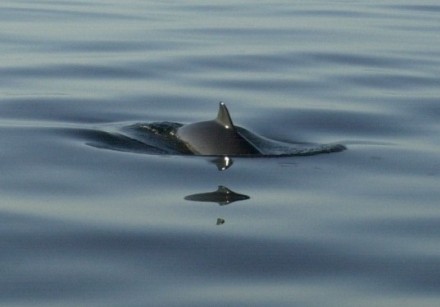International research team maps underwater noise in the Baltic Sea
The ocean is full of sounds. Breaking waves and surf provide an ever-present background noise, and the many seals, whales, fish and crustaceans communicating via sound contribute to create a complex acoustic environment, which has been termed the “soundcape”.

Also humans contribute to the soundscape and thereby influence the possibility for animals to find their way and communicate with each other. Particularly the intensifying ship traffic is in focus, but also activities such as installation of foundations for offshore windturbines and seismic oil exploration are highlighted.
The EU-LIFE project BIAS (Baltic Sea Information on the Acoustic Soundscape), which includes researchers from Aarhus University and the University of Southern Denmark as well as research institutions in Sweden, Finland, Estonia, Latvia, Poland and Germany, is a first attempt to describe the human-induced underwater noise in the Baltic Sea.
Senior scientist Jakob Tougaard, Aarhus University, is project manager of the Danish part of BIAS, which is led and coordinated from FOI, Sweden (the Swedish Defence Research Agency).
”We know little of the extent of the human contribution to underwater noise, and we know even less of the effects on the existing ecosystems. The Baltic Sea and the inner Danish waters are among the heaviest trafficked waterways in the world and are therefore an ideal place to start investigations,” says Jakob Tougaard.
40 monitoring stations in the Baltic Sea
The study will be initiated by establishing 40 monitoring stations in the Baltic Sea (up to and including the Danish belts) in 2014, and the monitoring measurements will then be combined with information on the ship traffic in an overall statistical model for the whole area.
Creation of the soundscape model has two main purposes. First of all to provide the first common set of standards for monitoring underwater noise on a regional sea scale, and by this fulfill the requirements on the countries around the Baltic Sea given by the EU Marine Strategy Framework Directive with respect to noise. Secondly, the modeling will provide background data for studies of how the noise may influence the distribution of marine mammals and fish, and hopefully end up being a central element in management of underwater noise pollution in the Baltic Sea.
Contact: Senior scientist Jakob Tougaard, tel.: +45 8715 8706, jat@dmu.dk
Department of Bioscience, Aarhus University

